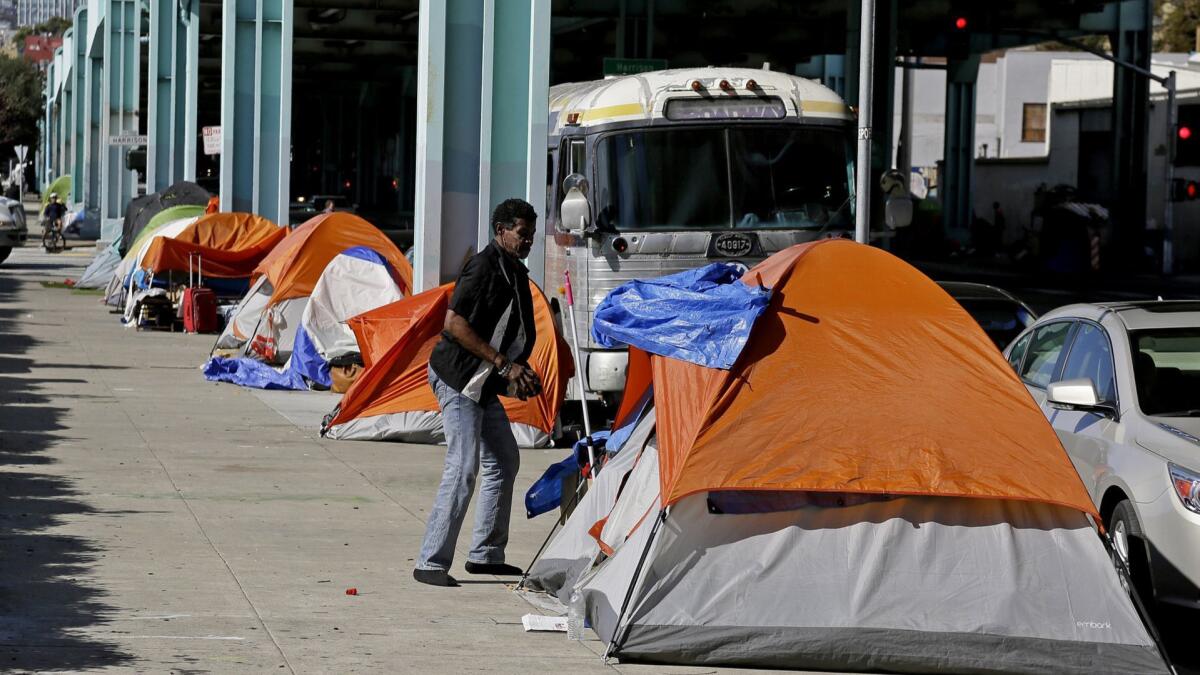Column: The truth about income inequality, in six amazing charts

- Share via
It has become fashionable in recent years to downplay the growth of income and wealth inequality in the developed world, especially in the United States — and also its consequences.
It’s not surprising that the naysaying comes mostly from spokespersons for the 1%, who, after all, are the chief beneficiaries of this trend and anxious to keep it from reversing. They also have the loudest megaphones in media and the most assiduous supporters in government.
That makes efforts like the World Inequality Database essential. Founded in 2011 and headquartered in Paris, the WID is funded by the Paris School of Economics, the Ford Foundation and numerous other grant-making government research agencies and nonprofit foundations in Europe and the U.S. Its executive committee includes three of our leading experts on economic inequality, Emmanuel Saez and Gabriel Zucman of UC Berkeley and Thomas Piketty of the Paris School of Economics.
If rising inequality is not properly monitored and addressed, it can lead to ... political, economic, and social catastrophes.
— World Inequality Report 2018
The WID relies on a vast store of data from government accounts, household surveys and tax data, among other categories. In its latest report, the database reduces this material to a series of graphs showing the history of inequality and its possible future — or futures, dependent as they are on government policy choices.
Its findings are that “economic inequality is widespread and to some extent inevitable,” but that the scale of inequality as it has evolved in many countries is not inevitable. More important is the implication of the existing trends: “If rising inequality is not properly monitored and addressed,” the report says, “it can lead to various sorts of political, economic, and social catastrophes.”
We’ve pulled six especially telling graphs out of the World Inequality Report 2018. Here they are, with a gloss on what they mean.
Let’s start with our most immediate concern, the rising income and wealth inequality in the United States. The rise of the 1% has been especially notable in the U.S. not merely because of this cohort’s share of national wealth, but because it shows the abandonment of American principles of egalitarian economic opportunities.
What may be most remarkable about this trend is how sharply it diverges from conditions in the region that most resembles the U.S. in terms of economic principles, Western Europe. The 1% commanded about 10% of national income in Europe in 1980, about the same as its share in the U.S. But its share rose only to about 12% in 2016, compared with 20% in the U.S.
Consequently, the bottom 50% in Western Europe still possess a larger share of national income than the top 1%, the reverse of the situation in the United States.
Globally, the prosperity of the top echelons feeds upon itself, forcing stagnation on income groups below them. The result is the “elephant curve” of global inequality, so named because it resembles the profile of a trumpeting pachyderm.
The top 1% have captured twice as much growth as the bottom 50% since 1980. “Income growth has been sluggish or even zero for individuals with incomes between the global bottom 50% and top 1% groups,” the report says.
An oft-overlooked phenomenon that both reflects and contributes to rising inequality is the decline of public capital in the developed world, especially when compared to the growth of private capital. The trend hamstrings government efforts to address economic inequality by impoverishing programs that would give middle- and low-income citizens help climbing the economic ladder, such as public education.
“Since 1980, very large transfers of public to private wealth occurred in nearly all countries, whether rich or emerging,” the WID reports. “While national wealth has substantially increased, public wealth is now negative or close to zero in rich countries.”
Those include the United States, where public capital has fallen to a negative figure. That’s because public capital is defined as public assets minus public debt. The U.S. has borrowed heavily for purposes that include funding tax cuts for the wealthy.
That’s effectively a transfer of wealth from the public to rich private individuals, and it’s likely to intensify in coming years, as the country borrows to fund the $1.5-trillion tax cut enacted in December to benefit corporations and the rich. Republicans in Congress already are talking about the need to cut back on programs that benefit the middle and working classes, such as Social Security and Medicare, because the nation “can’t afford” them. That would be a further draining of wealth from lower-income Americans to the 1%.
Current trends point to even more inequality in the offing. At existing rates, the wealth share of the top 0.1% will match the share of the entire global wealth middle class by 2050.
But it doesn’t have to be that way. Countries have a choice — whether to continue their current trends, which would mean increasing inequality, follow the U.S. model, which would increase inequality even more, or follow the European Union trend line, which would narrow the gap between the top 1% and the bottom 50%.
The choices are easy to identify, but increasingly difficult to implement as the 1% grow more politically powerful. Among the keys to reducing economic inequality are progressive tax systems, inheritance taxes and public investment in education, health and the environment.
In recent years, all three have moved in the wrong direction in the U.S. Tax progressivity has been sharply reduced, most recently with the tax cuts last December. Inheritance taxes also have been reduced. Public education in the K-12 and university levels is being stifled, and the one initiative aimed at improving health, the Affordable Care Act, has been under constant attack from conservatives fronting for the wealthy. The Trump administration has been pursuing a focused campaign to dismantle environmental protections.
These charts reveal how these trends have resulted in inequality and betoken even more in the future. What choices will be made in the U.S. and the rest of the developed world in years to come?
Keep up to date with Michael Hiltzik. Follow @hiltzikm on Twitter, see his Facebook page, or email [email protected].
Return to Michael Hiltzik’s blog.
More to Read
Inside the business of entertainment
The Wide Shot brings you news, analysis and insights on everything from streaming wars to production — and what it all means for the future.
You may occasionally receive promotional content from the Los Angeles Times.











